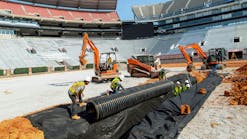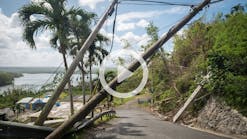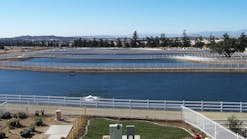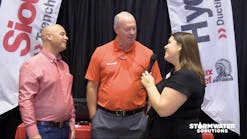Marin County Coalition Receives Grant for Pollution Prevention
Source Marin Independent Journal
The Marin County Stormwater Pollution Prevention Program was awarded a $685,000 grant from the U.S. Environmental Protection Agency.
The program, made up of governmental bodies of Marin County, Calif., and its 11 cities and towns, is in charge of enforcing state laws governing discharge from storm drain pipes into waterways, according to the Marin Independent Journal.
The money will go toward covering a portion of the cost for the state’s new requirement, which is aiming to prevent trash measuring at least 5 millimeters from being discharged into public storm drain systems from “priority land use areas” by 2030. These areas include industrial, commercial, high-density residential areas and transit stops, the Marin Independent Journal reported.
“The state Water Resources Control Board estimates that compliance with the trash regulations will cost roughly $20 million over the course of 10 years for all of the cities and towns and the unincorporated area of Marin,” said Rob Carson, the program’s administrator, to the Marin Independent Journal.
Rain sweeps trash into storm drains, which carry it to the bay, a lot of the trash from streets, sidewalks and parking lots end up in creeks, wetlands, bays and oceans.
Because of this, a majority of the grant money will be used to pay for “full trash capture systems,” which come in various forms according to the Marin Independent Journal.
“With the exception that they are constructed in such a way that there is an overflow structure, so in times of really heavy rain and flooding the screen gets bypassed,” Carson said to the Marin Independent Journal. “All of the trash control devices that are certified have an overflow structure of some kind to minimize the risk of localized flooding.”
Systems range from small devices, which are 5 millimeter screens that fit inside a catch basin, similar to a bathtub drain strainer, to larger systems, continuous deflection devices or vortex systems, which can be anywhere from 5 ft to 40 ft in diameter, and are buried below roads or upstream from pump stations.
According to the Marin Independent Journal, the larger devices create a vortex, so heavy material, such as sediment and non-floatable trash, is pulled into a sump, which is normally cleaned once a year.
Carson said to the Marin Independent Journal that because Marin storm drains aren’t heavily centralized like larger urban areas, it wouldn’t be cost effective to implement the larger devices throughout the whole county.
Rather they will consider putting them just in some suitable parts, such as the pump station in San Rafael’s Canal neighborhood, because the larger systems require less maintenance and trap some items smaller screens let pass through, such as sediment, oil, grease, PCBs, mercury and pesticides.
Read related articles to storm drains and pollution prevention.






